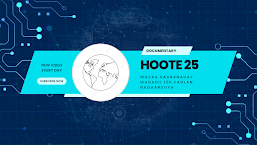# The Evolution and Impact of Recommendation Systems
## Introduction
Recommendation systems have become an integral part of our digital lives, influencing the content we consume, the products we buy, and the services we use. These systems leverage data and algorithms to predict and suggest items that users might be interested in, based on their past behavior, preferences, and interactions. This article explores the evolution and impact of recommendation systems, examining their history, technology, and implications for individuals and society.
## The Evolution of Recommendation Systems
### Early Recommendation Systems
The concept of recommendation systems dates back to the 1990s when early systems were developed to help users discover new content on the internet. These systems relied on simple algorithms, such as collaborative filtering and content-based filtering, to make recommendations based on user ratings and item attributes.
### Collaborative Filtering
Collaborative filtering is a technique used by recommendation systems to make predictions about user preferences by collecting and analyzing information from many users. This approach is based on the idea that users who have similar preferences in the past are likely to have similar preferences in the future. Collaborative filtering can be further divided into two types: user-based and item-based.
### Content-Based Filtering
Content-based filtering is another technique used by recommendation systems to make predictions about user preferences. This approach is based on the idea that users who have liked similar items in the past are likely to like similar items in the future. Content-based filtering relies on item attributes, such as keywords, genres, and categories, to make recommendations.
### Hybrid Recommendation Systems
Hybrid recommendation systems combine multiple recommendation techniques, such as collaborative filtering and content-based filtering, to make more accurate and personalized recommendations. These systems leverage the strengths of each approach while mitigating their weaknesses.
## The Technology Behind Recommendation Systems
### Machine Learning
Machine learning is a key technology used by recommendation systems to analyze data and make predictions. Machine learning algorithms can learn from past user interactions and preferences to make accurate and personalized recommendations.
### Natural Language Processing (NLP)
Natural language processing (NLP) is another technology used by recommendation systems to analyze and understand user-generated content, such as reviews and comments. NLP algorithms can extract valuable insights from unstructured text data, which can be used to improve the quality of recommendations.
### Deep Learning
Deep learning is a subset of machine learning that uses artificial neural networks to analyze and learn from large amounts of data. Deep learning algorithms can automatically discover patterns and relationships in data, which can be used to make more accurate and personalized recommendations.
### Big Data
Big data refers to the large volumes of data that recommendation systems analyze to make predictions. Big data technologies, such as Hadoop and Spark, enable recommendation systems to process and analyze massive amounts of data quickly and efficiently.
## The Impact of Recommendation Systems
### Personalization
One of the primary benefits of recommendation systems is personalization. By analyzing user data and preferences, recommendation systems can make personalized recommendations that are tailored to each individual user's interests and preferences.
### Discovery
Recommendation systems also help users discover new content, products, and services that they might not have otherwise found. By suggesting items that are similar to ones that users have liked in the past, recommendation systems can help users explore new interests and discover new favorites.
### Increased Engagement
Recommendation systems can also increase user engagement by providing relevant and interesting content. When users receive personalized recommendations that match their interests and preferences, they are more likely to engage with the content and spend more time on the platform.
### Revenue Generation
For businesses, recommendation systems can be a valuable tool for revenue generation. By suggesting products and services that users are likely to be interested in, recommendation systems can increase sales and drive revenue.
### Ethical Considerations
However, there are also ethical considerations associated with recommendation systems. For example, recommendation systems can create filter bubbles, where users are only exposed to content that aligns with their existing beliefs and preferences. This can lead to polarization and a lack of exposure to diverse viewpoints.
## Conclusion
Recommendation systems have become an integral part of our digital lives, influencing the content we consume, the products we buy, and the services we use. These systems leverage data and algorithms to predict and suggest items that users might be interested in, based on their past behavior, preferences, and interactions. While recommendation systems offer many benefits, such as personalization, discovery, and increased engagement, they also raise ethical considerations, such as filter bubbles and privacy concerns. It is essential for individuals and organizations to be aware of these considerations and to use recommendation systems responsibly.


.jpeg)

.jpg)

0 Comments